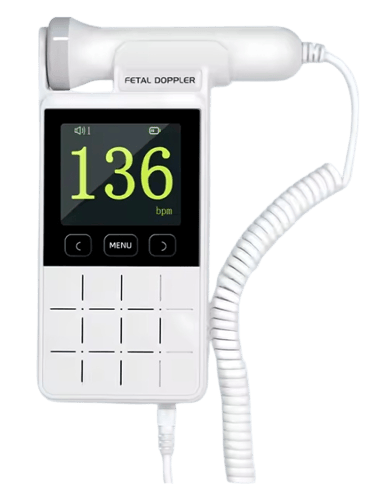5 New Trends in Portable Digital Ultrasonic Fetal Dopplers
10/20/20242 min read
Introduction to Portable Digital Ultrasonic Fetal Dopplers
The world of prenatal care has seen significant advancements, particularly with the introduction of portable digital ultrasonic fetal dopplers. These devices bring the heartbeat of an unborn child to parents and caregivers in a seamless way, bridging the gap between technology and personal health care. As technology evolves, several new trends have emerged, shaping the future of fetal monitoring. In this article, we will explore the five newest trends in portable fetal dopplers that are enhancing the experience of expectant parents and medical professionals alike.
1. Enhanced Connectivity Features
One of the most notable trends is the integration of enhanced connectivity features. New digital fetal dopplers are now more than just standalone devices. Many units come equipped with Bluetooth technology, enabling parents to connect their devices to smartphones and tablets. This makes it easier to store, share, and review fetal heart rate data with healthcare professionals. Not only does this improve communication between parents and doctors, but it also empowers parents by allowing them to track their baby's heartbeat whenever they want.
2. User-Friendly Interface and Design
Modern portable fetal dopplers boast an intuitive interface and ergonomic designs. These advancements make the devices easier to operate, even for first-time users. Larger screens with clear indicators show real-time fetal heart rate readings, while simple button layouts minimize confusion. Many units also come with soft-touch materials that provide a more comfortable grip, reducing stress during use. These design enhancements ensure that parents can quickly and easily monitor their baby's heartbeat, bringing peace of mind.
3. Enhanced Sound Quality and Sensitivity
The latest portable digital ultrasonic fetal dopplers are also improving in the sound quality of the heartbeat they detect. Newer models come equipped with advanced sensors that enhance audio clarity, allowing parents to hear their baby's heartbeat more distinctly than ever before. Additionally, enhanced sensitivity ensures that even small changes in fetal heartbeat can be detected, forming a more comprehensive picture of fetal health. This is particularly beneficial in the early stages of pregnancy, where finding the heartbeat can sometimes be challenging.
4. Long Battery Life and Portability
As portability remains a central theme, manufacturers are focusing on enhancing battery life. New models are designed with energy-efficient technology that allows for longer usage times on a single charge. Many portable digital fetal dopplers can now run for several hours without recharging, making them ideal for expectant mothers on the go. This increased longevity translates to convenience and reliability, enabling mothers to monitor their baby’s heartbeat whenever needed.
5. Integration with Health Apps and AI Technology
The use of artificial intelligence (AI) in conjunction with portable fetal dopplers is on the rise. Some cutting-edge models are now able to analyze the detected heartbeat patterns and provide insights on the baby's health. Integration with health applications allows for advanced tracking metrics such as fetal movement, making this data accessible in an easily digestible format. This trend equips parents with valuable information, keeping them informed and proactive about their pregnancy health.
In summary, the evolution of portable digital ultrasonic fetal dopplers is remarkable. With enhanced connectivity, improved interfaces, better sound quality, increased portability, and integration of AI technology, these devices are transforming prenatal care. As trends continue to develop, parents can expect even more innovative features that ensure the health and happiness of their babies.

© 2024. All rights reserved.


